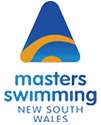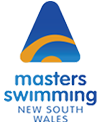Technique, as defined by the movements a swimmer executes while performing any of the four strokes (including starts and turns), is obviously crucial to swimming speed. All swimmers should be rigorously taught the basic movement patterns that are generally accepted as constituting good technique; using drills, technique-based sets, and regular individual correction. These movement patterns will generally need to be reinforced for the duration of a swimmer’s career.
There are only two underlying factors that determine swimming speed, namely propulsion and resistance. Hence every aspect of technique (bar the exceptions mentioned below) should relate to either increasing propulsion or decreasing resistance.
The only possible exceptions are the aspects of technique that relate to the recovery of the arms in butterfly, backstroke and freestyle, as these movements neither increase propulsion nor reduce resistance (except perhaps to a degree in backstroke). For the arm recovery in these strokes then, the technique considerations should therefore be doing these movements with maximum relaxation to conserve energy for the propulsive phase, and to get the arms in the optimal position to best commence propulsion in the pull.
When you read or hear of a technique tip, it is useful then to ask yourself how, apart from the exceptions mentioned above, does this aspect of technique either help increase propulsion or decrease resistance. If it does neither, then you can justifiably question its value and whether it is purely cosmetic.
Therefore as well as concentrating on ‘correct’ movement patterns, it is useful, depending on your skill and maturity, to focus on what you are trying to achieve in general terms, i.e. maximising propulsion and/or minimising resistance.
With respect to maximising propulsion for example, rather than thinking only about the path your arms and/or hands take during the pull phase, just be aware of the feel of the water on your palms and forearms and try and maximise the backward pressure you are exerting on the water for the full range of the pull. In other words ‘get hold’ of the water as early as you can and hold onto it for as long as you can. If you are doing this effectively then chances are good that you will be executing the correct movement patterns. This particular focus is more relevant for freestyle, backstroke and butterfly, where almost all of your speed results from your pull, unlike breaststroke where the significant majority of your speed comes from your kick.
With respect to minimising resistance for example, rather than thinking only about the mechanics of your body position and other factors that affect the resistance you create, just imagine that you are ‘punching as small a hole as possible through the water’, with your hips and legs being in the ‘shadow’ of your torso; and executing all your movements as smoothly and efficiently as possible.
In any case, what constitutes the best technique for any swimmer in any stroke is an extremely complex question involving many variables. Perhaps the most significant variable is flexibility or range of motion in the shoulder and surrounding area, the spine and, for breaststrokers in particular, the hips and ankles. Other variables include limb length, strength and neuromuscular coordination.
Support for the idea that there is no single ideal technique in any stroke can be found in the fact that while they will usually have important basic principles in common, mature elite swimmers demonstrate considerable variance in technique. While all swimmers can certainly learn from the technique of mature elite swimmers, swimmers should take great care in blindly copying all aspects of champions’ technique.
There may be a good reason why an older, well-trained swimmer performs an aspect of technique a particular way, usually because of or to compensate for a deficiency in another area (e.g. flexibility or strength). Often a well-trained swimmer familiar with the principles underlying good technique (i.e. increasing propulsion and decreasing resistance), and who is encouraged to think about these principles when training, will develop the nuances of technique that are most appropriate for that swimmer given his/her physical characteristics. Depending on the swimmer, it may therefore often be better to trust in this intuitive ‘self-development’ than to apply guesswork in modifying technique.
There is more scope for divergence from ‘ideal’ technique in aspects that relate to increasing propulsion (e.g. pull pattern), than those that relate to reducing resistance (e.g. body position).
It may therefore be counter-productive to modify a swimmer’s technique to conform to a perceived ideal, especially if the swimmer finds a particular movement pattern difficult to perform. For example, a swimmer with relatively poor shoulder flexibility may be able to exert more backward pressure (i.e. generate more propulsion) with a straighter arm pull in freestyle than attempting, with difficulty, to get wrist/elbow up early and into a position where they can apply little force.
And, I should add that, from my experience, bringing about a significant technique change in a Masters swimmer who may have done the same action countless thousands of times is, while not impossible, very, very difficult. Changes require great motivation, concentration and perseverance.
So be your own best coach and focus on maximising propulsion and minimising resistance! And swim for (your) life!
Mark Morgan

